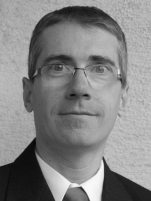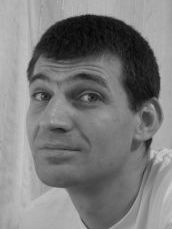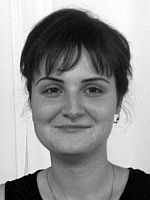
For the English version of the introduction click here
 A BME Matematika Intézet Analízis és Differenciálegyenletek Tanszékének közös Alkalmazott Analízis Szemináriuma 2016. őszén indult Faragó István (Differenciálegyenletek Tanszék) kezdeményezésére az MTA-ELTE Numerikus Analízis és Nagy Hálózatok Kutatócsoporttal együttműködésben. A szeminárium célja, hogy elősegítse egy alkalmazott analízissel (funkcionálanalízis, differenciálegyenletek, numerikus módszerek) foglalkozó kutatói kör kialakítását az intézeten belül. A szemináriummal fórumot szeretnénk biztosítani az alkalmazott analízissel foglalkozó matematikusok és az analízist alkalmazó kutatók számára az együtt gondolkodásra. További cél az érdeklődő hallgatók (MSc, PhD) bevonása a kutatói munkába.
A BME Matematika Intézet Analízis és Differenciálegyenletek Tanszékének közös Alkalmazott Analízis Szemináriuma 2016. őszén indult Faragó István (Differenciálegyenletek Tanszék) kezdeményezésére az MTA-ELTE Numerikus Analízis és Nagy Hálózatok Kutatócsoporttal együttműködésben. A szeminárium célja, hogy elősegítse egy alkalmazott analízissel (funkcionálanalízis, differenciálegyenletek, numerikus módszerek) foglalkozó kutatói kör kialakítását az intézeten belül. A szemináriummal fórumot szeretnénk biztosítani az alkalmazott analízissel foglalkozó matematikusok és az analízist alkalmazó kutatók számára az együtt gondolkodásra. További cél az érdeklődő hallgatók (MSc, PhD) bevonása a kutatói munkába.
Szemináriumunk 2017-től felvette a Farkas Miklós Alkalmazott Analízis Szeminárium nevet. Ezzel szeretnénk emléket állítani egyetemünk egykori tanszékvezető matematikaprofesszorának, aki elindította egyetemünkön a matematikus-mérnök képzést, és a stabilitáselmélet valamint a biomatematika terén elért jelentős tudományos eredményeivel ill. könyveivel nagyban hozzájárult az alkalmazott matematika erősödéséhez.
A covid járvány miatt három évig szünetelt a szeminárium. 2023. szeptemberétől indult újra a korábban említett szervezetek utódjainak (BME Analízis és Operációkutatás Tanszék, HUN-REN-ELTE Numerikus Analízis és Nagy Hálózatok Kutatócsoport) szervezésében.
The talks are in English on a regular basis. / Az előadásokat angol nyelven tartjuk.
Organizers / Szervezők:  Faragó István1,2,3,
Faragó István1,2,3,  Karátson János1,2,3 ,
Karátson János1,2,3 , Horváth Róbert1,3 ,
Horváth Róbert1,3 , Mincsovics Miklós1,3 ,
Mincsovics Miklós1,3 ,  Svantnerné Sebestyén Gabriella1,3 (1BME, 2ELTE, 3HUN-REN-ELTE NUMNET)
Svantnerné Sebestyén Gabriella1,3 (1BME, 2ELTE, 3HUN-REN-ELTE NUMNET)
Tentative program of the semester: -
Next seminar: 11 December (Thursday), 10:15, BME H306 (directions)
Bálint Lados (ELTE, Department of Applied Analysis and Computational Matematics)
Analysis of the convergence estimates of the CGN and GCR method applied to discretized nonsymmetric elliptic problems
After the discretization of a nonsymmetric elliptic problem, the resulting system of linear equations has to be solved to obtain the numerical solution. To achieve that, several iterative methods can be used, but their performance may highly depend on the coefficients of the PDE. In this talk, we consider the Conjugate Gradient method applied to the normal equation (CGN) and the Generalized Conjugate Residual method (GCR), and we compare their rate of convergence both numerically and theoretically using the linear and superlinear convergence estimates, which can in fact describe the convergence quite accurately. The numerical experiments suggest that for our special class of problems, depending on the coefficients of the PDE, we can forecast (or at least explain) which method will converge faster. Apart from this comparison, the estimates' continuous dependence on the domain will be illustrated as well, which suggests a similar continuous dependence of the residual norms. I will also present a recent result about an improved superlinear convergence estimate.
Previous seminars
27 November
 Imre Barna (Wigner Research Centre for Physics at HUN-REN Hungarian Reserach Network)
Imre Barna (Wigner Research Centre for Physics at HUN-REN Hungarian Reserach Network)
Analytic solutions of various diffusion equations
After a pedagogical introduction of the reduction mechanism which is capable to transform partial differential equations (of even systems) to ordinary differential equations (or even systems) we apply the self-similar Ansatz to various diffusion equations. We present and investigate the analytic results which all can be expressed with special functions like the Kummer's or the Whittaker functions.
13 November
 Donát M. Takács (BME GPK Department of Energy Engineering, and HUN-REN Centre for Energy Research, Fusion Plasma Physics Department)
Donát M. Takács (BME GPK Department of Energy Engineering, and HUN-REN Centre for Energy Research, Fusion Plasma Physics Department)
Moving forward with the help of backward error analysis: improving symplectic and other numerical methods
Backward error analysis (BEA) has become a standard tool for analysing structure-preserving numerical methods through the so-called distorted or modified equations corresponding to a numerical method. The distorted equations provide a continuous-time counterpart to the discrete map that describes a numerical method as applied to a particular system. Our recent results have demonstrated the viability of BEA-based compensation, a constructive approach that can improve the accuracy of an existing numerical method without modifying the numerical method itself.
After introducing the fundamentals of BEA, this talk focuses on two approaches for BEA-based compensation, illustrated through examples of the Newmark and Symplectic Euler time integration methods. The first approach introduces a slight compensation into the simulated system to counteract the distortions from the numerical method. The second approach leverages the discrepancy between the distorted Hamiltonians underlying a symplectic numerical method in different coordinate systems: in certain cases, a coordinate system can be identified that improves the accuracy of the method. Both approaches are shown to increase the order of accuracy of the results, compared to the original methods.
30 October

Ágnes Havasi (ELTE, Department of Applied Analysis and Computational Mathematics)
On the AN-stabilility of Runge-Kutta methods
A-stable numerical methods are commonly recommended for ordinary differential systems with bounded or contractive solutions, as they produce stable numerical solutions for Dahlquist's test equation regardless of step size. However, A-stability does not guarantee that the numerical solution shares the boundedness / contractivity of the exact solution. AN-stability, which allows time-dependent λ(t) in Dahlquist's equation, is a generalization introduced by Butcher for Runge–Kutta methods. This talk formulates AN-stability for general one-step methods and addresses the gap in literature concerning confluent Runge–Kutta methods, where algebraic stability is not necessary. A necessary condition for AN-stability of confluent methods is derived and applied to investigate Runge–Kutta methods combined with Richardson extrapolation. Results show that some known Runge–Kutta methods cannot be combined with Richardson extrapolation while maintaining AN-stability.
16 October
 Miklós Pintér (Corvinus University of Budapest)
Miklós Pintér (Corvinus University of Budapest)
A gentle introduction to game theory
This talk aims to provide a concise yet comprehensive introduction to the fundamental concepts of game theory, a mathematical framework for analyzing strategic interactions among rational decision-makers. The presentation will first distinguish between the two principal branches of the field: cooperative and non-cooperative game theory. In the cooperative setting, we explore how groups of agents can form binding agreements and how collective outcomes can be evaluated using concepts such as the core and the Shapley value. In contrast, the non-cooperative framework focuses on individual strategic behavior, equilibrium analysis, and solution concepts such as the Nash equilibrium and its refinements.
The overall objective of the presentation is to equip participants with a conceptual understanding of the main ideas and methodologies of game theory, thereby providing a foundation for further study or interdisciplinary application.
2 October

Hujter Mihály (BME, a korábbi Differenciálegyenletek Tanszék nyugalmazott egyetemi docense)
A műegyetemi gépészkari matematika tanszékvezetői
A műegyetemi gépészkari matematika tanszékvezetői között olyan neves tudósokat sorolhatunk fel, mint Császár Ákos (1924-2017), Faragó Tibor (1912-1983), Tomkó József (1930-1988), Borbély Samu (1907-1984), Farkas Miklós (1932-2007), Bajcsay Pál (1925-2015), Szántai Tamás (1946-2025). Őket méltatjuk majd egyenként pár mondatban. Néhány érdekességet, különlegességet is elmesélünk, továbbá fotók, rövid videók is bemutatásra kerülnek. Az anekdotákat sem hagyjuk a feledés homályába veszni.
(The talk will be in Hungarian.)
18 September
 Vilmos Komornik (Strasbourgi Egyetem)
Vilmos Komornik (Strasbourgi Egyetem)
Ingham Type Theorems and Observability Problems
We report on some joint works with C. Baiocchi and P. Loreti on the application of non-harmonic Fourier series to control theory. We study the observability of strings, beams, string systems and plates by various generalizations of a classical theorem of Ingham, itself a generalization of Parseval's equality.
Presentations in 2024/25, 2023/24, 2019/20, 2018/19, 2017/18, 2016/17

